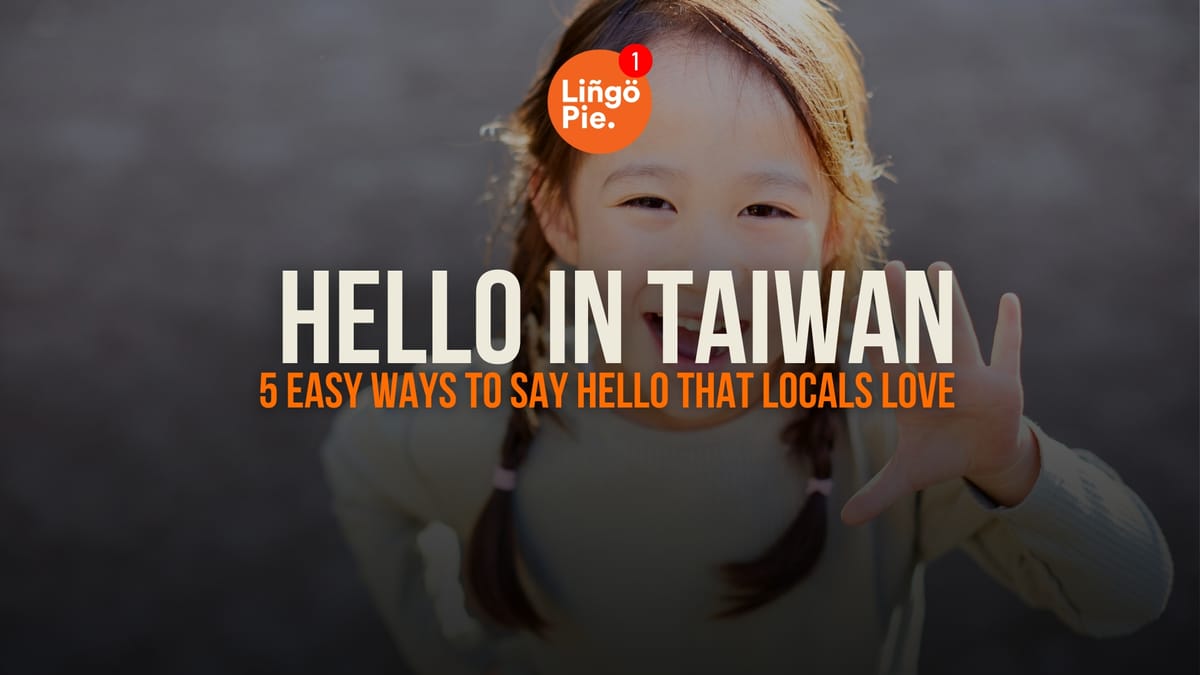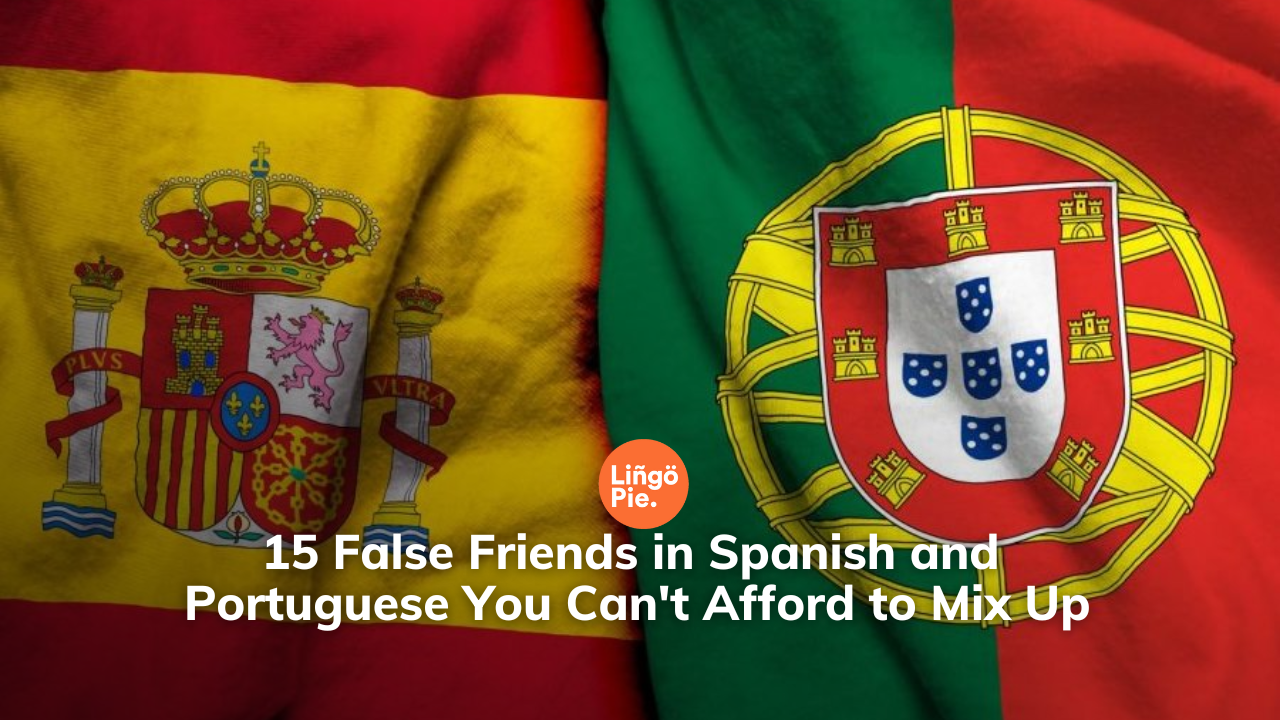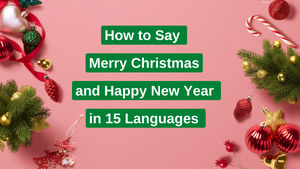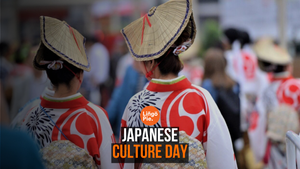If you’re planning a trip to Taiwan, one of the easiest ways to make a great first impression is with a simple “hello.” But before you go with the classic Nǐ hǎo (你好), here’s something you should know: Taiwan isn’t just about Mandarin. In fact, Mandarin Chinese is only one of the many languages spoken on the island, alongside Taiwanese Hokkien, Hakka, and several Indigenous languages.
That’s why knowing a mix of greetings can really set you apart as a thoughtful traveler. In this post, I’ll share 5 easy ways to say hello in Taiwan that cover both Mandarin and Hokkien, so you can greet locals with confidence (and maybe even earn a few extra smiles along the way!).
- 6 Best Taiwan Dramas On Netflix For Learning Mandarin Chinese
- 60 Chinese Slang Words And Phrases You’ll Find on Xiaohongshu
- 20+ Chinese Curse Words And Meanings Explained

Taiwanese Hokkien vs. Chinese Mandarin
Taiwan is multilingual, and the two most common languages you’ll hear are Mandarin Chinese and Taiwanese Hokkien. Mandarin is the official language used in schools, the government, and most media. On the other hand, Taiwanese Hokkien (also known as Taiyu) is widely spoken in daily life, especially at home, in markets, and among older generations.
While both use Chinese characters in writing and are naturally tonal languages, the spoken forms are quite different. Here are some examples:
| Meaning | Mandarin (中文 / Zhōngwén) | Taiwanese Hokkien (臺語 / Tâi-gí) |
|---|---|---|
| Hello | 你好 (Nǐ hǎo) | Lí-hó (你好) |
| Thank you | 謝謝 (Xièxiè) | To-siā (多謝) |
| Goodbye | 再見 (Zàijiàn) | Tsài-kiàn (再見) |
| Good morning | 早安 (Zǎo ān) | Gâu-tsá (𠢕早) |
| Yes | 是 (Shì) | Sī (是) |
| No | 不是 (Bú shì) | M̄-sī (毋是) |
How to Say Hello in Taiwan
Nǐ hǎo (你好) - Hello (informal)
This is the most common greeting in Mandarin and often the first phrase learners are taught. The word nǐ (你) means “you” and hǎo (好) means “good,” so the phrase literally translates as “you good.” It is used in casual situations, such as with friends, classmates, or people around the same age.
While widely understood, in Taiwan it can sometimes feel slightly textbook-like, as locals often prefer time-of-day greetings in real life.
Nín hǎo (您好) - Hello (formal)
This is the polite form of nǐ hǎo. The character nín (您) is a respectful version of “you,” often used to show deference to elders, teachers, or in professional environments like business meetings. The structure is the same (“you good”) but it signals formality and respect.
Lí-Hó (你好) - Hello (to one person)
In Taiwanese Hokkien, lí means “you” and hó means “good.” It is the equivalent of Mandarin nǐ hǎo but pronounced differently, reflecting the distinct sounds of Hokkien. This version is also used only when greeting one individual.
Lín-Hó (恁好) - Hello (to more than one person)
In Taiwanese Hokkien, lín (恁) means “you” in the plural sense and hó means “good.” It is the group form of lí-hó and is used when addressing more than one person.
Hāi (嗨) - Hi (borrowed from English)
This is a modern greeting widely used in Taiwan, especially among younger people. The character 嗨 is a phonetic borrowing of the English “hi,” and it carries the same casual, friendly tone. Because of globalization and pop culture, hāi is instantly recognizable and often used in informal contexts like texting, chatting with friends, or meeting peers.

Daily Greetings in Taiwanese
To greet someone throughout the day in Taiwanese Hokkien, there are set phrases for morning, afternoon, and evening/night. Each phrase is distinct and serves different times of day.
- 𠢕早 (gâu-tsá) = Good morning
- 午安 (gōo-an) = Good afternoon
- 暗安 (àm-an) = Good evening; also used for good night
- 晚安 (buán-an) = Good night (alternative, less commonly used than 暗安; can also mean late evening)
- 再見 (tsài-kiàn) = Goodbye
Each phrase can be used on its own to greet people at the appropriate time of day. For example, 𠢕早 is used in the morning before noon, 午安 in the afternoon, and 暗安 in the evening or when saying goodnight. Both 暗安 and 晚安 can be used at night, though 暗安 is more traditional in Taiwanese Hokkien.

How to Greet in Taiwanese
In Taiwanese Hokkien, greetings are often combined with address terms that show respect, family roles, or social closeness. Instead of just saying lí-hó (hello), people usually add the proper title for the person they’re speaking to.
Examples:
- “Lí-hó, A-tsí” → Hello Auntie
- “Lí-hó, Lāu-sī” → Hello Teacher
- “Lí-hó, Péng-iú” → Hello Friend
This structure makes greetings feel natural and polite in Taiwanese Hokkien.
Greeting Relatives
Family terms are very important in Taiwanese culture. When greeting relatives, use the correct kinship title after your greeting.
| Greeting + Address | Meaning | Usage Example |
|---|---|---|
| Lí-hó, A-tsí (阿姊) | Hello, Auntie (older woman) | Used for your mother’s sister or an older female relative |
| Lí-hó, A-siū (阿叔) | Hello, Uncle (older man) | Used for your father’s younger brother or male relative |
| Lí-hó, A-má (阿媽) | Hello, Grandma | Used for your grandmother |
| Lí-hó, A-pá (阿爸) | Hello, Dad | Used for your father |
Greeting Elders and Respectful Terms
Adding a respectful title shows politeness when speaking to older people or people you don’t know well.
| Greeting + Address | Meaning | Usage Example |
|---|---|---|
| Lí-hó, Sian-seng (先生) | Hello, Mr. | Greeting a male teacher or older man |
| Lí-hó, Sió-tsí-á (小姐) | Hello, Miss | Greeting a young woman |
| Lí-hó, Lāu-sī (老師) | Hello, Teacher | Greeting a teacher |
| Lí-hó, Tó-sian (董事) | Hello, Boss | Greeting a business owner or company leader |
Greeting Friends or Peers
When speaking to friends, peers, or younger people, the greeting can be casual and simple.
| Greeting + Address | Meaning | Usage Example |
|---|---|---|
| Lí-hó, Péng-iú (朋友) | Hello, Friend | Used with peers or new acquaintances |
| Lí-hó, Tio̍h-bóe (同學) | Hello, Classmate | Used in school or study groups |
| Hāi | Hi | Informal greeting among friends (no title needed) |
Why Learning Mandarin Chinese Is the Next Step
Learning a few greetings in Taiwanese Hokkien is a wonderful way to connect with locals on a cultural level. It shows respect for Taiwan’s heritage and often makes conversations feel warmer and more personal.
That said, if your goal is to communicate with the widest range of people in Taiwan, Mandarin Chinese is the more practical option, since it’s the official language used in schools, business, and media.
A great way to begin learning Mandarin Chinese is with Lingopie, a fun platform that helps you learn by watching real Chinese shows, movies, and everyday content. It’s an engaging way to pick up useful phrases, practice listening, and prepare yourself for authentic interactions in Taiwan.
Curious? Click the button below to get a FREE 7-day trial!
FAQ
Is Taiwanese the same as Mandarin?
No, they are different languages. Mandarin is the official language of Taiwan, while Taiwanese Hokkien is widely spoken daily, especially among older generations and in informal settings. The two share Chinese characters in writing but sound completely different when spoken.
Do people in Taiwan understand English?
Yes, many younger people and those in the service industry understand some English, especially in big cities like Taipei. However, English is not widely spoken in rural areas. Learning a few phrases in Mandarin or Taiwanese Hokkien makes communication much easier.
Which greeting should I use most often in Taiwan?
Mandarin greetings like Nǐ hǎo (你好) or time-specific phrases are safest since everyone understands them. Taiwanese Hokkien greetings like lí-hó are a great way to connect more personally, especially with locals outside big cities. Using either shows respect and friendliness.
Is it worth learning Taiwanese Hokkien?
Yes, especially if you want to connect more deeply with Taiwanese culture and traditions. Hokkien is often spoken at home and in markets, and locals appreciate when visitors try it. But for broader communication, Mandarin will be more useful day to day.
How hard is Mandarin to learn for beginners?
Mandarin can seem challenging because of tones and characters, but many learners find it easier with the right tools. The grammar is simpler than many Western languages, and spoken Mandarin can be picked up quickly with immersion. Apps like Lingopie make it fun by teaching through real shows and conversations.









